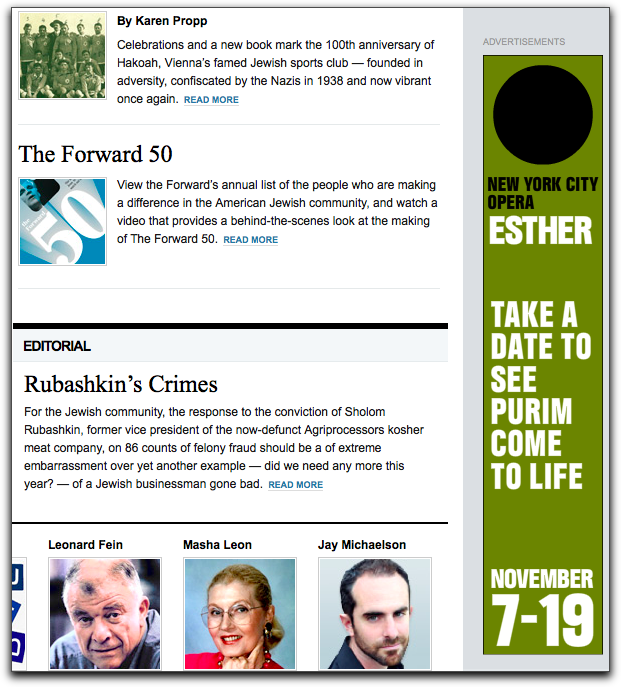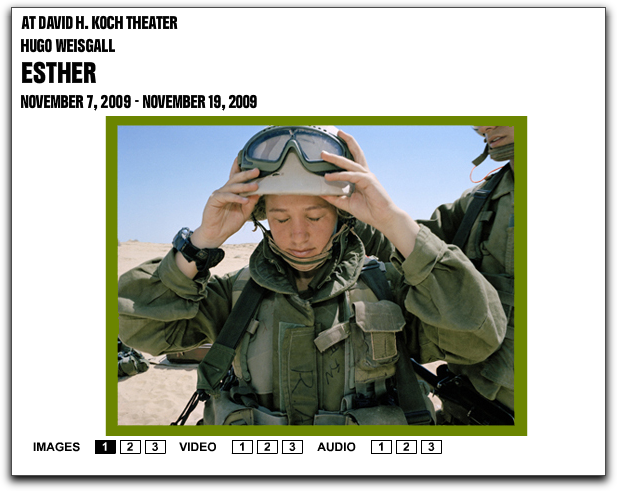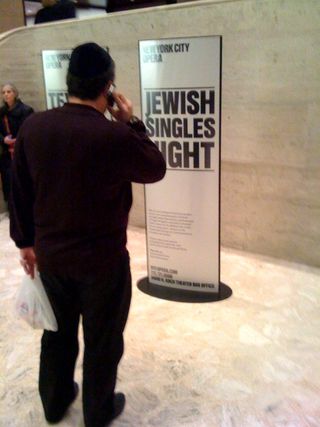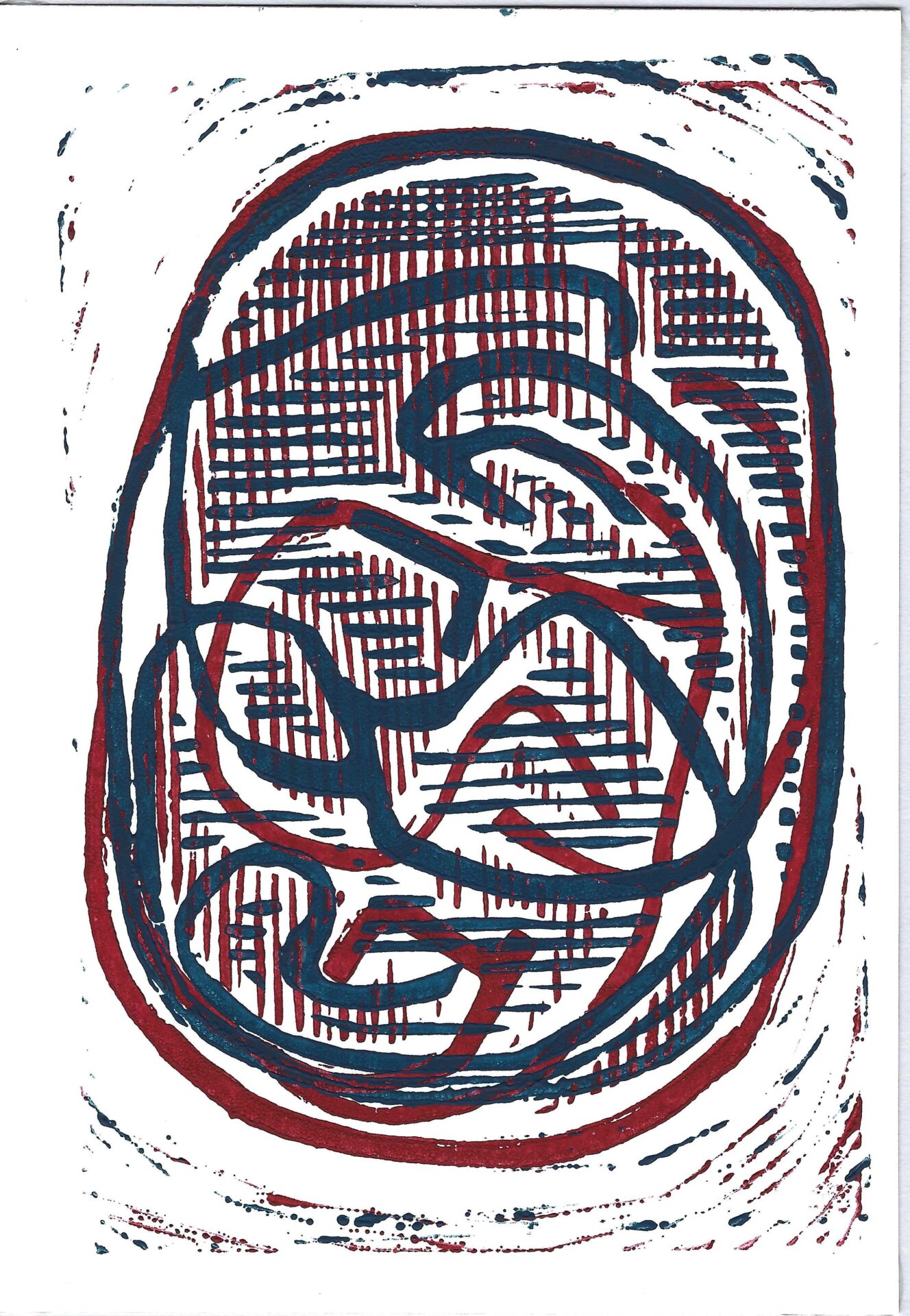purim in november
On Thursday night, November 19, 2009, Debbie and I went to see the opera Esther at the New York City Opera in Lincoln Center.
The opera, the last one by composer Hugo Weisgall is based on the biblical Book of Esther. It uses the basic storyline (with some modifications in the sequence of the telling) and builds on that in an attempt to update some of the ideas. Much of the dialog comes from the biblical text, with additions that seem to be from Psalms. Weisgall’s musical idiom is hardly biblical and the one hat-tip to nusach seemed to me, and to the family of Jewish musicians sitting behind us, almost gratuitous. While the story is ancient and the music dates from the late 20th century, the marketing was definitely of the moment.
That amalgam intrigues me. The opera was marketed almost as though it was a Jewish community event. Perhaps as a way to bring in a new audience, the 92YTribeca held a symposium that dealt with the opera. The online edition of the Forward ran advertisements encouraging readers to take a date to see purim come to life.

advertisement for esther in the forward
Signs inside the opera house indicated that certain performances were Jewish Singles Night!
a man you what?
I have been familiar with the Weisgall name for many years, dating back to my time in Young Judaea when we studied the history of Zionism. Later, when I attended Cal State U at LA I learned a new word from the sister of Ralph Schoenman (a rabid anti-zionist, but not the issue here), the man who was the private secretary for Bertrand Russell. It was then that we learned that our mother was not only not a “housewife”, nor a “homemaker”, but our father’s amanuensis. I then came to understand that Meyer Weisgall, Hugo’s uncle, was the “trusted lieutenant” and, likely, the amanuensis of Chaim Weizmann. Weisgall was able to publish 23 volumes of Weizmann’s “Letters and Papers”.
In 1999 a book turned up on the new books shelf of the library at Temple Adat Shalom in Poway: A Joyful Noise: Claiming the Songs of My Fathers by Deborah Weisgall. The name was familiar, but I could not quite place it. I checked out the book and read through it. Deborah is Hugo’s daughter and from that book I gained a new appreciation for the musical wing of the Weisgall family.
zionist opera
Hugo’s uncle Meyer had been involved in the production of an earlier “opera” that told the story of the Jewish people: The Eternal Road with a libretto by Franz Werfel and score by Kurt Weill. The Eternal Road was an attempt by Weisgall to call attention to the plight of European Jewry in the late 1930s. Hugo Weisgall’s Esther seems to be a similar attempt to call attention to the situation of the Jews sixty years later.
The a‑tonal nature of the score of Esther makes the possibility of leaving the opera humming a tune almost impossible. The a‑tonality, however does not diminish the emotional impact of the score, which is intense. The acoustic power is great, even at low decibel levels. It is, however, almost all at the same emotional level. I hoped, in the second act, for Esther to sing an aria in soft dissonance exploring the excruciating choice she had to make, whether to cast her lot with her people and approach Xerxes, or continue to hide the nature of her origins. My hope was in vain. Only near the end of the third act, after the fact, after the “Jews” have ably defended themselves does Weisgall allow Esther to take the level down a notch (but barely a notch) to feel bad about all those who have had to die in the process.
There are oddities in the production. Except for Mordecai and Esther, all the Jews appear dressed in gray rags. They look like poor Eastern European Jews about to be sent to concentration camps. Granted, they fear a similar extermination, but still, the association is far too obvious. Some of the oddities are uncalled-for. One of the advertising images for the opera is of a young (presumably) Israeli female soldier. There is no connection whatsoever between the image and the opera.

israeli soldier advertising the opera
In addition, during the harem scene, before she is to be brought to Xerxes, while, at stage right Esther sings regarding her concern about what to do with the king, an apparently naked young woman emerges from the bath at center stage and gets toweled off. Similarly, in an inversion of the Abraham Ibn Ezra statement “hamayvin yavin”, when Xerxes does meet Esther, he is so taken by her that he cannot stop repeating the phrase (I paraphrase) “Esther = Ishtar”.
The New York Times review was very positive. Not till later was I able to find some dissenting opinions.
Very few lines from the libretto are memorable. In fact, some of the most striking lines of the Book of Esther, are missing entirely. Mordecai does not tell Esther to hide her origins when she first goes to the palace. And Esther 4:13–14 (perhaps the only theological comment in the entire book) which has taken on political significance due to its use among certain Evangelical Christians and (even, though I can’t find the reference now) then-President George W. Bush, is not there:
Mordechai had this message delivered to Esther…
“If you keep silent at this time, relief and deliverance will come to the Jews from another quarter.
And who knows, perhaps you have attained to royal position for just this moment.”
More recently, Esther’s response has been picked up by Sarah Palin.
In fact, the only line I actually remember does not come from any biblical text, but from the Jewish community slogans of the period at the time of the opera’s composition: The United Nations revoked the Zionism is Racism resolution. When Esther realizes that her fate is tied up with all the other Jews in Persia and around the world, she states:
We are one!
The date of publication for this post is November 29, 2009. A number of significant dates related to this story cluster at this point for which there are numerous different lapel buttons.
- On the Gregorian calendar, November 29, 1947 = 16 Kislev 5708 (December 3, 2009) marks the date the United Nations voted to partition British Mandate Palestine in two and establish two states: a state for the Jews and a state for the Palestinians. The Jews accepted the option immediately, while the Palestinians have, sadly, yet to accept this, and seem even to deny both that it happened in our historical memory and its relevance to the conflict of the moment.
Various maps of Israel appear on very many buttons. - Chaim Weizmann, for whom the elder Weisgall may have served as an amanuensis died on November 8 1952⁄2009 = 21 Cheshvan.
Chaim Weizmann appears on a variety of buttons, some (with black ribbons attached) dating explicitly to his death. - Golda Meir, a woman who, even if you disagreed with her, could be considered a modern-day Esther, died December 8 1978 = 8 kislev or November 25, 2009.
Golda Meir appears on very few buttons. I am aware of only two.
This button dates (as explained above) to the identification of American Jewry with Israel during the period when the United Nations considered Zionism as a form of racism. The button was also released in “celluloid” form. Other related slogans appeared such as “We are all Zionists”.

We Are One עם אחד
| Date: | ca. 1978 |
| Size: | 3.5 |
| Pin Form: | straight clasp |
| Print Method: | litho |
| Text | We Are One עם אחד |
your lapel buttons
Many people have lapel buttons. They may be attached to a favorite hat or jacket you no longer wear, or poked into a cork-board on your wall. If you have any laying around that you do not feel emotionally attached to, please let me know. I preserve these for the Jewish people. At some point they will all go to an appropriate museum. You can see all the buttons shared to date.


